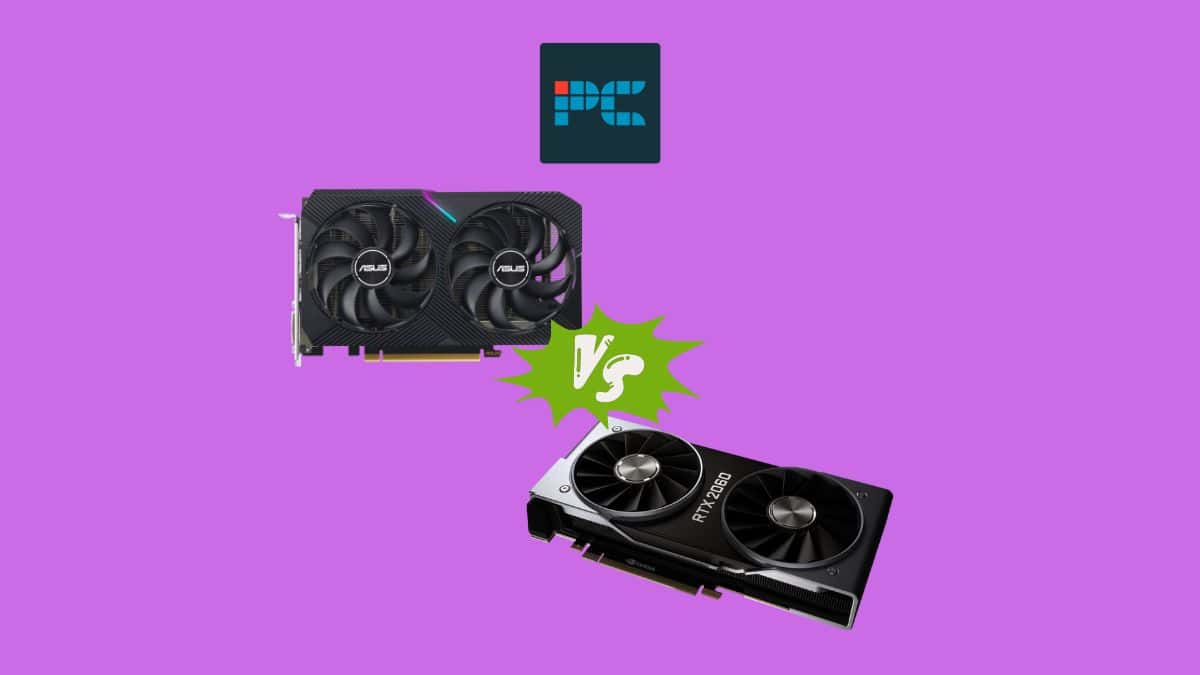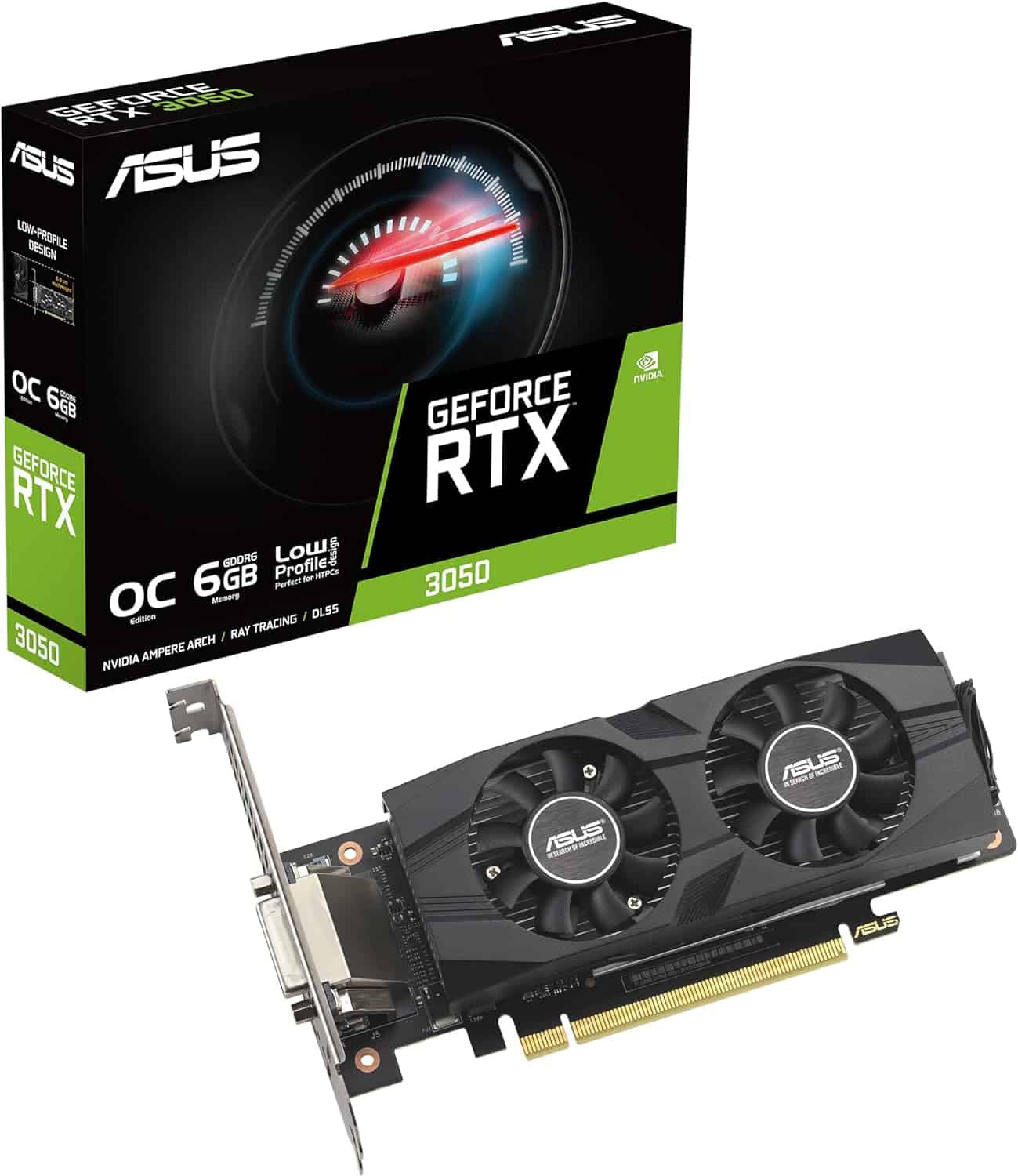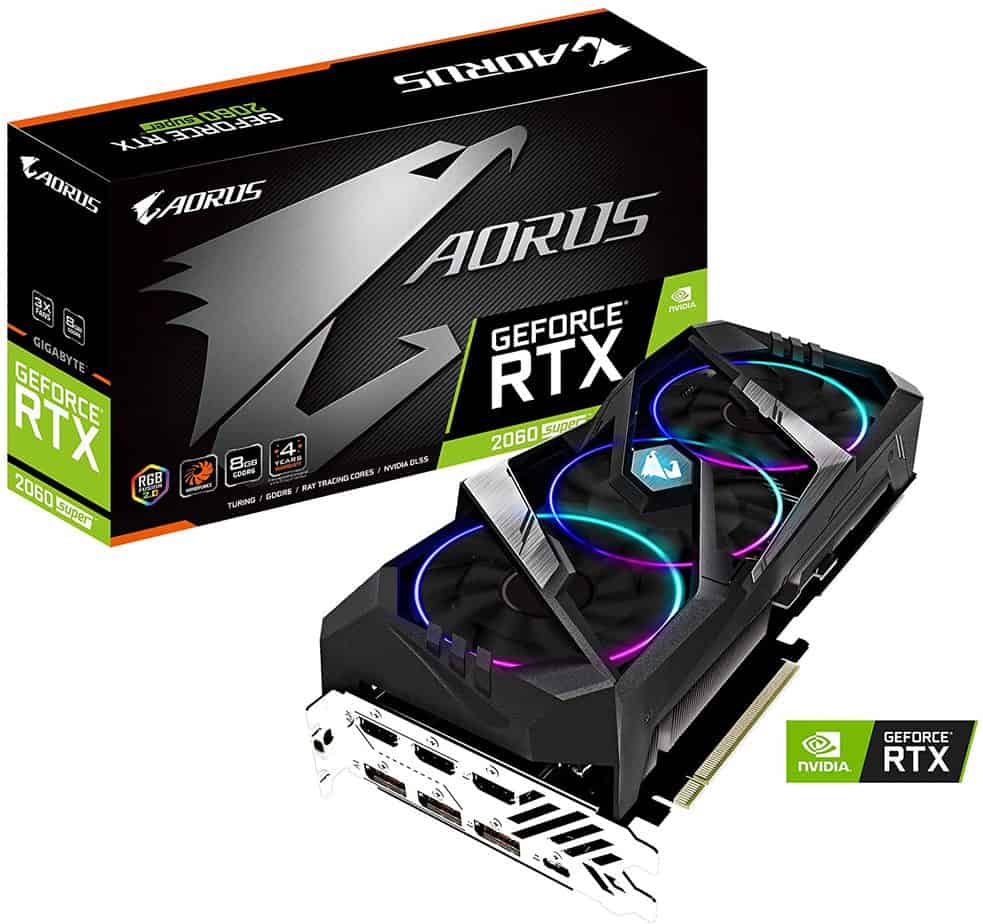Nvidia RTX 3050 6GB vs Nvidia RTX 2060: A generational change?

Nvidia has established itself as a frontrunner, crafting GPUs that stand the test of time. Both the Nvidia RTX 3050 6GB and the RTX 2060 remain highly sought after by those aiming to assemble powerful yet cost-effective PCs. This comparison of the Nvidia RTX 3050 6GB vs Nvidia RTX 2060 delves into each card’s merits, focusing on Nvidia GeForce RTX’s legacy, essential components, and power consumption to help you decide which GPU best suits your needs.
Nvidia RTX 3050 6GB vs. Nvidia RTX 2060: Specs comparison
The Nvidia RTX 3050 6GB and RTX 2060 GPUs represent two distinct generations within Nvidia’s lineup, each offering unique benefits to gamers and creators alike. This specs comparison delves deeper into their capabilities, architecture, and performance to see how they stack up against each other.
Prime Day is finally here! Find all the biggest tech and PC deals below.
- Sapphire 11348-03-20G Pulse AMD Radeon™ RX 9070 XT Was $779 Now $739
- AMD Ryzen 7 7800X3D 8-Core, 16-Thread Desktop Processor Was $449 Now $341
- ASUS RTX™ 5060 OC Edition Graphics Card Was $379 Now $339
- LG 77-Inch Class OLED evo AI 4K C5 Series Smart TV Was $3,696 Now $2,796
- Intel® Core™ i7-14700K New Gaming Desktop Was $320.99 Now $274
- Lexar 2TB NM1090 w/HeatSink SSD PCIe Gen5x4 NVMe M.2 Was $281.97 Now $214.98
- Apple Watch Series 10 GPS + Cellular 42mm case Smartwatch Was $499.99 Now $379.99
- ASUS ROG Strix G16 (2025) 16" FHD, RTX 5060 gaming laptop Was $1,499.99 Now $1,274.99
- Apple iPad mini (A17 Pro): Apple Intelligence Was $499.99 Now $379.99
*Prices and savings subject to change. Click through to get the current prices.
Architecture and memory
The RTX 2060, launched in early 2019, was Nvidia’s foray into bringing real-time ray tracing and AI-enhanced graphics to a wider audience. Equipped with 6GB of GDDR6 memory, it provided a solid foundation for high-definition gaming. The RTX 3050 6GB, on the other hand, builds on this legacy with Nvidia’s advanced Ampere architecture, offering improvements in ray tracing, AI-driven enhancements through DLSS, and greater efficiency.
Evolution in architecture and memory utilization
The Nvidia RTX 3050 6GB represents a generational leap over the RTX 2060, chiefly through its integration of Nvidia’s advanced Ampere architecture. This shift signifies not just an incremental upgrade but a transformative improvement in how gaming graphics are rendered and experienced.
Ampere vs. Turing: A shift in paradigm
The RTX 2060, powered by the Turing architecture, was a pioneering card that introduced gamers to the wonders of real-time ray tracing and AI-enhanced visuals, thanks to its 6GB of GDDR6 memory. This card was Nvidia’s first attempt at democratizing high-fidelity gaming, making it accessible to a broader audience without compromising on quality.
Transitioning to the RTX 3050 6GB, we witness the adoption of the Ampere chip, which brings about enhanced ray tracing capabilities and AI-driven improvements via DLSS (Deep Learning Super Sampling). This leap is not just about higher specs but about optimizing how each watt of power is utilized, translating to significant gains in efficiency and performance.
Performance and gaming
In the gaming arena, the battle between the Nvidia RTX 3050 6GB and the RTX 2060 unfolds with remarkable clarity, especially when scrutinizing fps and overall performance in titles like Hitman. The RTX 3050 leverages Nvidia’s Ampere architecture to elevate gaming experiences, utilizing technologies such as DLSS (Deep Learning Super Sampling) to amplify frame rates. This advancement ensures that gamers don’t have to choose between high fps and visual quality, even in demanding scenarios.
Full-HD gaming experience
Both GPUs shine in Full HD (1920×1080) gaming, a sweet spot for their 6GB of GDDR6 memory. However, the RTX 3050 edges ahead with its superior memory bandwidth, facilitating quicker data processing and smoother in-game action. This becomes particularly evident in titles that benefit from realistic lighting and complex visual effects enabled by DirectX, where the Ampere architecture’s prowess is on full display.
DLSS: A game-changer
DLSS stands out as a transformative feature for the RTX 3050, allowing it to render games at lower resolutions and then upscale them to Full HD or higher, using AI and machine learning. This not only boosts fps but does so while enhancing the game’s visual fidelity, offering a glimpse into the future of gaming graphics.
Comparative gaming benchmarks
In Hitman and other graphically intensive games, the RTX 3050 demonstrates a tangible improvement in fps and overall performance. This GPU handles memory-intensive tasks more adeptly, thanks to its efficient use of GDDR6 memory and enhanced memory compression techniques. As a result, gamers can enjoy detailed textures and complex environments in Full HD resolution, with the RTX 3050 delivering a more fluid and immersive gaming experience.
Connectivity and features
Both GPUs support the latest display connectivity options, including HDMI and DisplayPort, allowing for high-refresh-rate gaming monitors and multi-display setups. The RTX 3050 and 2060 also feature Nvidia’s encoder and Nvidia Shadowplay for high-quality game streaming and recording. Nvidia G-Sync compatibility ensures a tear-free gaming experience on supported displays.
Compatibility and power
The RTX 2060 and 3050 are compatible with a wide range of motherboards and systems, from high-end desktops to laptops powered by Intel Core i7 processors. The energy efficiency of the Ampere architecture in the RTX 3050 makes it a compelling option for gamers looking to build or upgrade a desktop or laptop gaming setup without extensive power requirements.
When considering an upgrade from the RTX 2060 to the RTX 3050 6GB, it’s essential to factor in motherboard compatibility and power requirements. The Ampere architecture’s advancements mean that the RTX 3050 can deliver greater performance per watt, potentially allowing for a wider range of system builds without necessitating a significant power supply upgrade.
Tabular comparison
| Specifications | Nvidia RTX 3050 6GB | Nvidia RTX 2060 |
|---|---|---|
| Architecture | Ampere | Turing |
| Processor size | 8 nm | 12 nm |
| Transistors | 8,700 million | 10,800 million |
| Base clock | 1042 MHz | 1365 MHz |
| Boost clock | 1470 MHz | 1680 MHz |
| Memory clock | 1750 MHz 14 Gbps effective | 1750 MHz 14 Gbps effective |
| Memory size | 6 GB | 6 GB |
| Memory bus | 96 bit | 192 bit |
| Bandwidth | 168.0 GB/s | 336.0 GB/s |
| Shading units | 2304 | 1920 |
| Core/SM count | 18 | 30 |
| TDP | 70 W | 160 W |
| L1 cache | 128 KB (per SM) | 64 KB (per SM) |
| L2 cache | 2 MB | 3 MB |
| Resizable BAR support | Yes | No |
| Ray Tracing & DLSS | Yes (Ray Tracing Cores, DLSS with AI Acceleration) | Yes (Ray Tracing Cores, DLSS) |
| Chip Model | GA107 | TU106 |
Nvidia RTX 3050 6GB vs. Nvidia RTX 2060: Performance
When dissecting the performance landscape between the Nvidia RTX 3050 6GB and the RTX 2060, it becomes evident that advancements in GPU technology are not solely defined by numerical benchmarks. The RTX 3050, despite its ostensibly lower base and boost clock speeds compared to its predecessor, showcases a significant leap in gaming and rendering efficiency, attributed to Nvidia’s Ampere architecture.
Benchmarks vs. Real-world application
Although the RTX 2060 edges out the RTX 3050 in Geekbench performance scores, with scores of 75,916 to the RTX 3050’s 66,151, this numeric comparison only scratches the surface of the user experience. Real-world gaming scenarios, where dynamic rendering, ray tracing, and AI-driven enhancements come into play, often reveal a different narrative—one where the RTX 3050’s architectural improvements provide a more fluid and immersive experience.
Gaming technologies and features
The introduction of features such as Nvidia Broadcast, Nvidia Reflex, and Advanced Optimus with the RTX 3050 accentuates the card’s appeal beyond mere frame rates. These features enhance streaming quality, reduce system latency, and optimize battery life, respectively, offering a more holistic and enriched gaming experience.
Ray tracing and HDR performance
Ray tracing technology, which simulates realistic lighting effects, is more efficiently handled by the RTX 3050, thanks to its Ampere architecture. Combined with support for HDR (High Dynamic Range) and the latest OpenGL standards, the RTX 3050 is adept at delivering stunning visuals with enhanced color depth and contrast.
Thermal and power considerations (TGP)
The Total Graphics Power (TGP) rating of a GPU influences its performance efficiency and heat management. The RTX 3050, with its refined power consumption metrics, demonstrates Nvidia’s commitment to delivering high performance while maintaining manageable thermal outputs, making it an ideal choice for compact systems or those with limited cooling capabilities.
While the RTX 2060 may boast a higher benchmark score, the RTX 3050 6GB’s adoption of newer technologies such as Nvidia Broadcast, Nvidia Reflex, and Advanced Optimus, combined with its superior ray tracing and HDR capabilities.
The RTX 3050 6GB’s adoption of newer technologies positions it as a formidable contender in the current GPU market. This generational shift underscores the importance of considering a broad spectrum of performance metrics and features when evaluating the true value and capability of a graphics card.
Tabular comparison
| Feature/Performance Metric | Nvidia RTX 3050 6GB | Nvidia RTX 2060 | Remarks |
|---|---|---|---|
| Average FPS in 1080p Gaming (e.g., Hitman 3, Full HD) | 85 FPS | 75 FPS | The 3050 leads with better frame rates in most modern titles, showcasing its efficiency. |
| Ray Tracing Performance | Good | Moderate | The 3050 benefits from newer raytracing optimizations, offering more realistic lighting with less power consumption. |
| Power Efficiency (Gaming) | Superior | Good | The GA107 chip in the 3050 is designed for high efficiency, consuming less power while delivering competitive performance. |
| Nvidia Features Support | DLSS, Nvidia Reflex, Advanced Optimus | DLSS, Nvidia ShadowPlay | The 3050 supports the latest Nvidia technologies, including raytracing and Nvidia Max-Q for enhanced mobile performance. |
| Mobile Performance | Enhanced with Max-Q design | Standard | The 3050 with Max-Q design offers better performance for laptops, balancing power and efficiency. |
| VR Ready | Yes | Yes | Both GPUs support VR gaming, but the 3050’s architectural improvements enhance the experience. |
| Minimum Frame Rates in Intensive Titles | Higher min rates | Lower min rates | The 3050 often maintains higher minimum frame rates, ensuring smoother gameplay during demanding scenes. |
| Simultaneous Multi-Projection (SMP) | Supported | Supported | Both GPUs can handle multiple displays efficiently, but the 3050’s newer architecture may offer slight improvements in certain scenarios. |
| Variable Rate Shading (VRS) | Yes | Yes | Both support VRS, but the 3050’s implementation is more advanced, optimizing pixel shading for better performance. |
| Thermal Design Power (TDP) | 70 W | 160 W | The 3050’s lower TDP reflects its lower power consumption, making it a more energy-efficient option. |
| Memory Bandwidth | 168.0 GB/s | 336.0 GB/s | Despite lower bandwidth, the 3050 compensates with more efficient memory utilization and newer compression technologies. |
Nvidia RTX 3050 6GB vs. Nvidia RTX 2060: Price and value
The balance between cost and performance is crucial, especially for gamers and creators on a budget. The Nvidia RTX 3050 6GB, with an MSRP of $179, presents itself as an exceptional entry-level solution that doesn’t compromise on capability. This price point is particularly enticing for those venturing into the realm of PC gaming or digital content creation, offering solid performance at a fraction of the cost.
Contrastingly, the RTX 2060, with its $349 price tag, stands on the higher end of the spectrum. It undoubtedly delivers superior performance, attributed to its earlier generational leap and the inclusion of advanced features like real-time ray tracing. However, the price difference between the RTX 3050 and the RTX 2060 prompts a careful evaluation of value versus performance.
For many, the RTX 3050’s affordability, coupled with its efficient power consumption and commendable performance, may render it the better choice.
Tabular comparison
| Feature/Aspect | Nvidia RTX 3050 6GB | Nvidia RTX 2060 |
|---|---|---|
| MSRP (Manufacturer’s Suggested Retail Price) | $249 | $349 |
| Power Consumption | 90W | 160W |
| Performance per Dollar | High | Moderate |
| Future-Proofing | Moderate | Low |
| Availability and Market Price | Widely available at or near MSRP | Often found above MSRP due to demand |
| Value for Gamers | Excellent for 1080p gaming | Good for 1080p, with some limitations in newer titles |
| Value for Content Creators | Good | Moderate |
Adding to the comparison, the RTX 3050 Ti variant offers a slight performance bump over the standard RTX 3050, potentially narrowing the gap with the RTX 2060 for a marginally higher cost. This introduces another layer of consideration for buyers weighing the price-performance ratio of these models.
Moreover, the RTX 3050’s lower power requirement translates to less strain on the system’s power supply and cooling system, making it a more energy-efficient option. This efficiency is not only beneficial for reducing electricity bills but also for supporting environmental sustainability.
Lastly, compatibility with Microsoft’s PlayReady 3.0 DRM technology ensures that the RTX 3050 is equipped for seamless streaming of protected content, aligning with the requirements of modern digital entertainment. This feature, alongside the card’s performance metrics, solidifies its position as a value-packed option for users looking to enjoy the latest games and multimedia applications.
While the RTX 2060 may offer a higher performance ceiling, the RTX 3050 and its Ti variant stand out for their remarkable balance of price, power efficiency, and performance, making them highly attractive options for a broad spectrum of PC users.
Final verdict
The Nvidia RTX 3050 6GB represents a notable step forward in GPU technology, showcasing the advancements made in efficiency, performance, and value. While the RTX 2060 still holds its ground with its superior specifications in some aspects. The RTX 3050’s architectural improvements and competitive pricing make it a compelling choice for budget-conscious gamers and creators seeking a balance between performance and affordability in their graphics card purchases.
Does a smaller number in the GPU model mean higher performance?
In the context of Nvidia GPUs, the model number typically indicates the generation and positioning within that generation. For instance, the RTX 3050, despite being a newer generation (Ampere) than the RTX 2060 (Turing), doesn’t necessarily mean it performs better across all metrics.
Performance varies based on architecture improvements, memory configuration, and other technical specs. Both GPUs have their merits, with the RTX 3050 offering newer technology like improved NVENC for encoding, and the RTX 2060 having higher bandwidth and possibly better performance in older titles not optimized for Ampere’s advancements.
What are Nvidia Ansel and NVENC, and how do they differ between the RTX 3050 and RTX 2060?
Nvidia Ansel is a revolutionary way to capture in-game screenshots, offering high-fidelity, post-processed images from any angle within supported games.
Both the RTX 3050 and RTX 2060 support Ansel, allowing gamers to capture stunning game moments. NVENC, Nvidia’s hardware encoder, sees a generational improvement from Turing to Ampere, with the RTX 3050 providing more efficient and higher quality video streaming and recording capabilities, benefiting content creators and streamers.
How do the RTX 3050 and RTX 2060 compare in gaming benchmarks like Fire Strike?
In gaming benchmarks such as 3DMark’s Fire Strike, the RTX 2060 might show higher scores due to its raw power and higher memory bandwidth, which is crucial for high-intensity graphic processing in synthetic benchmarks.
However, the RTX 3050, with its Ampere architecture, may perform better in real-world gaming scenarios, especially in titles that leverage ray tracing and DLSS. This demonstrates that smaller numbers in GPU models do not directly correlate to performance but rather indicate different generational technologies and capabilities.


